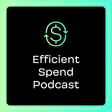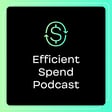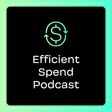
AI Visitor Scoring for a Future without Cookies | Constantine Yurevich of SegmentStream
SUBSCRIBE TO LEARN FROM PAID MARKETING EXPERTS 🔔
The Efficient Spend Podcast helps start-ups turn media spend into revenue. Learn how the world's top marketers manage their media mix to drive growth!
In this episode of The Efficient Spend Podcast, Constantine Yurevich, Founder and Chief Storyteller of SegmentStream shares the challenges in marketing measurement and innovative approaches to attribution and optimization. Constantine discusses insights into overcoming legacy systems, leveraging AI-powered visitor scoring, and navigating the evolving digital marketing landscape to maximize ROI and business growth.
About the Host: Paul is a paid marketing leader with 7+ years of experience optimizing marketing spend at venture-backed startups. He's driven over $100 million in revenue through paid media and is passionate about helping startups deploy marketing dollars to drive growth.
About the Guest: Constantine Yurevich is the Founder and Chief Storyteller at SegmentStream, an AI-powered platform helping fast-growing startups and DTC brands optimize marketing analytics for rapid growth. With over six years of experience building innovative solutions, he is passionate about transforming digital marketing strategies through advanced machine learning and data-driven insights.
VISIT OUR WEBSITE: https://www.efficientspend.com/
CONNECT WITH PAUL: https://www.linkedin.com/in/paulkovalski/
CONNECT WITH CONSTANTINE: https://www.linkedin.com/in/yurevichcv/
EPISODE LINKS:
https://segmentstream.com/about
https://segmentstream.com/resources/success-stories
https://martech.org/martech-topics/
https://www.marketingevolution.com/knowledge-center
https://www.adroll.com/blog
https://www.adroll.com/features/digital-advertising-platform\



